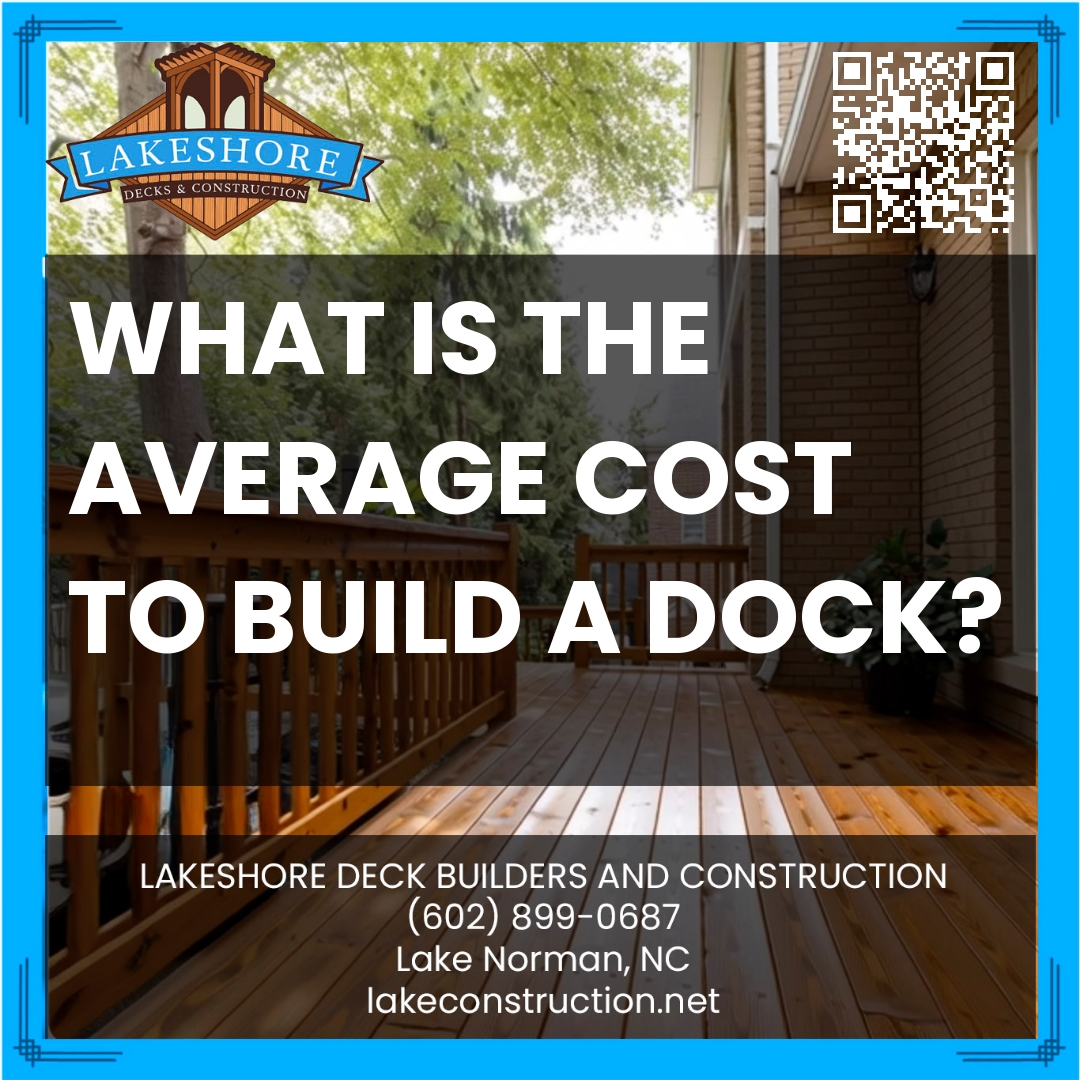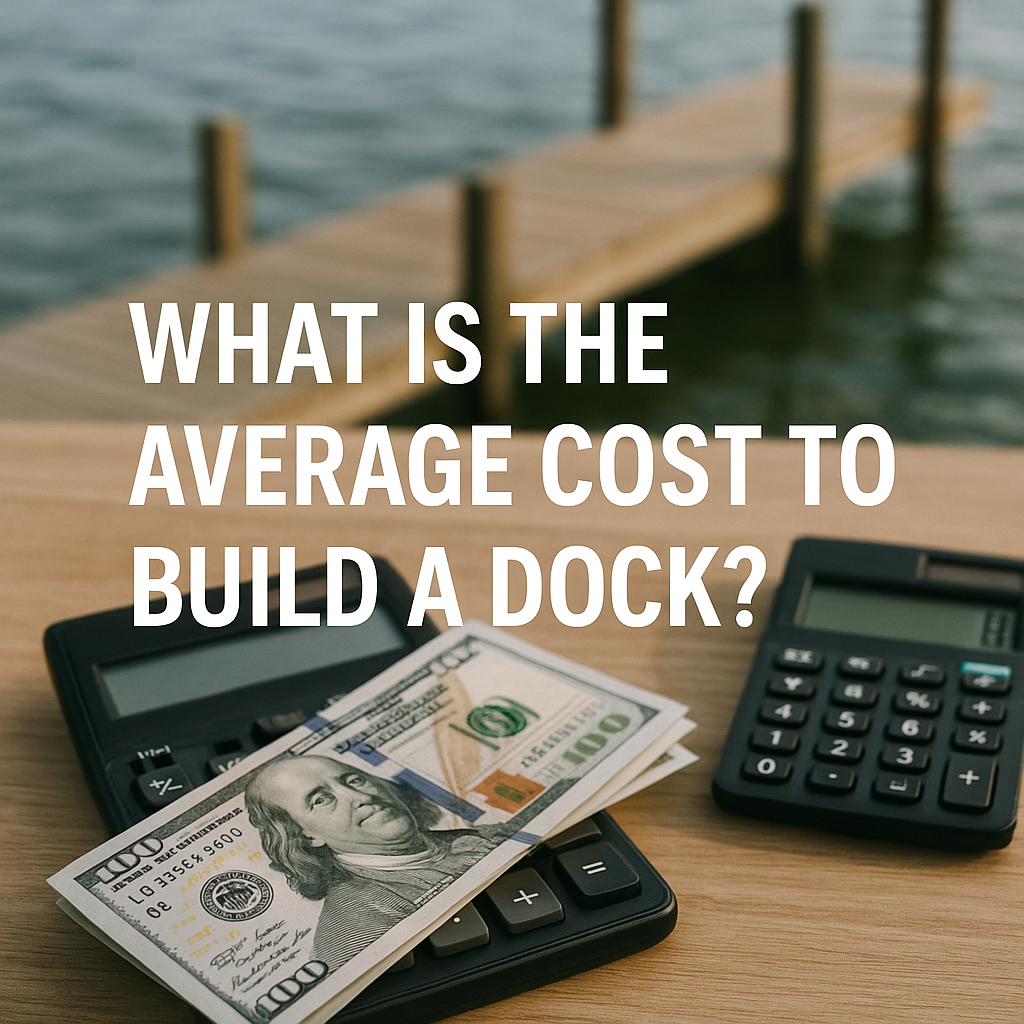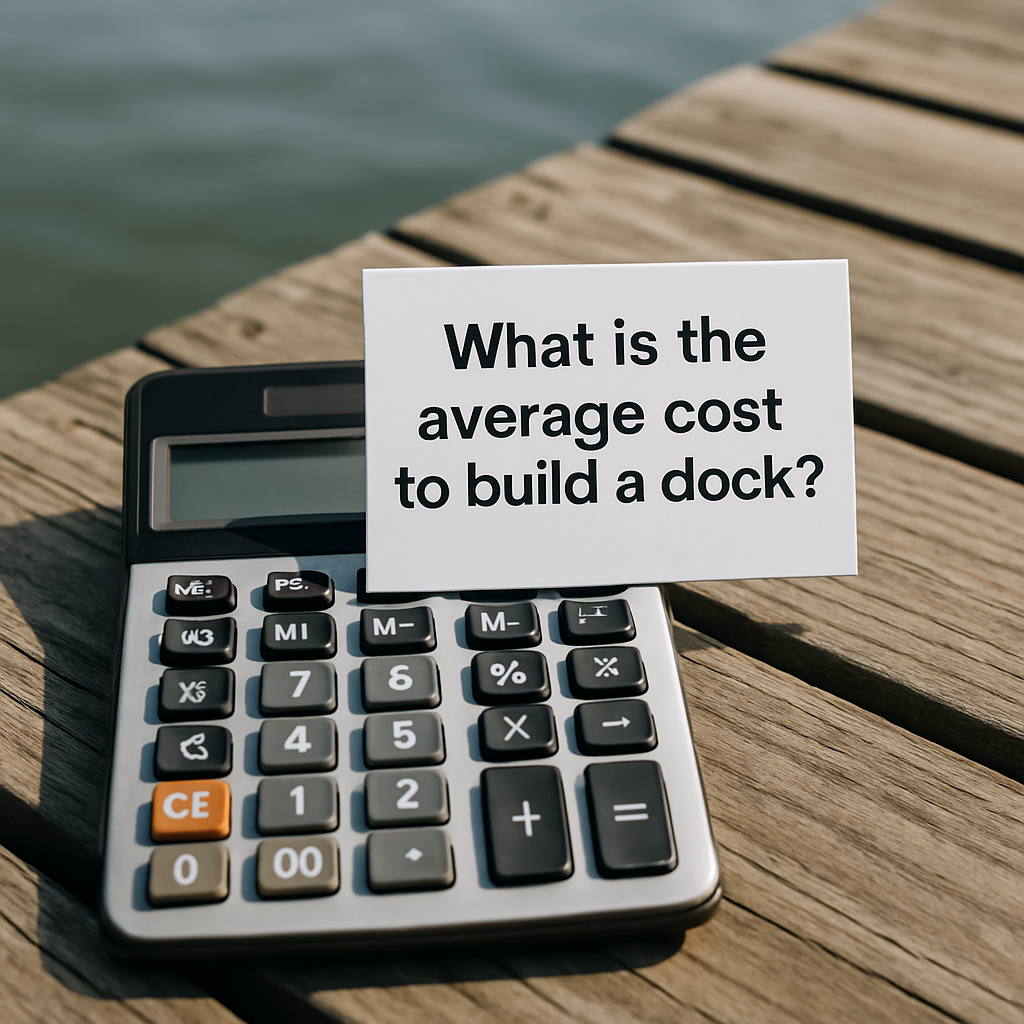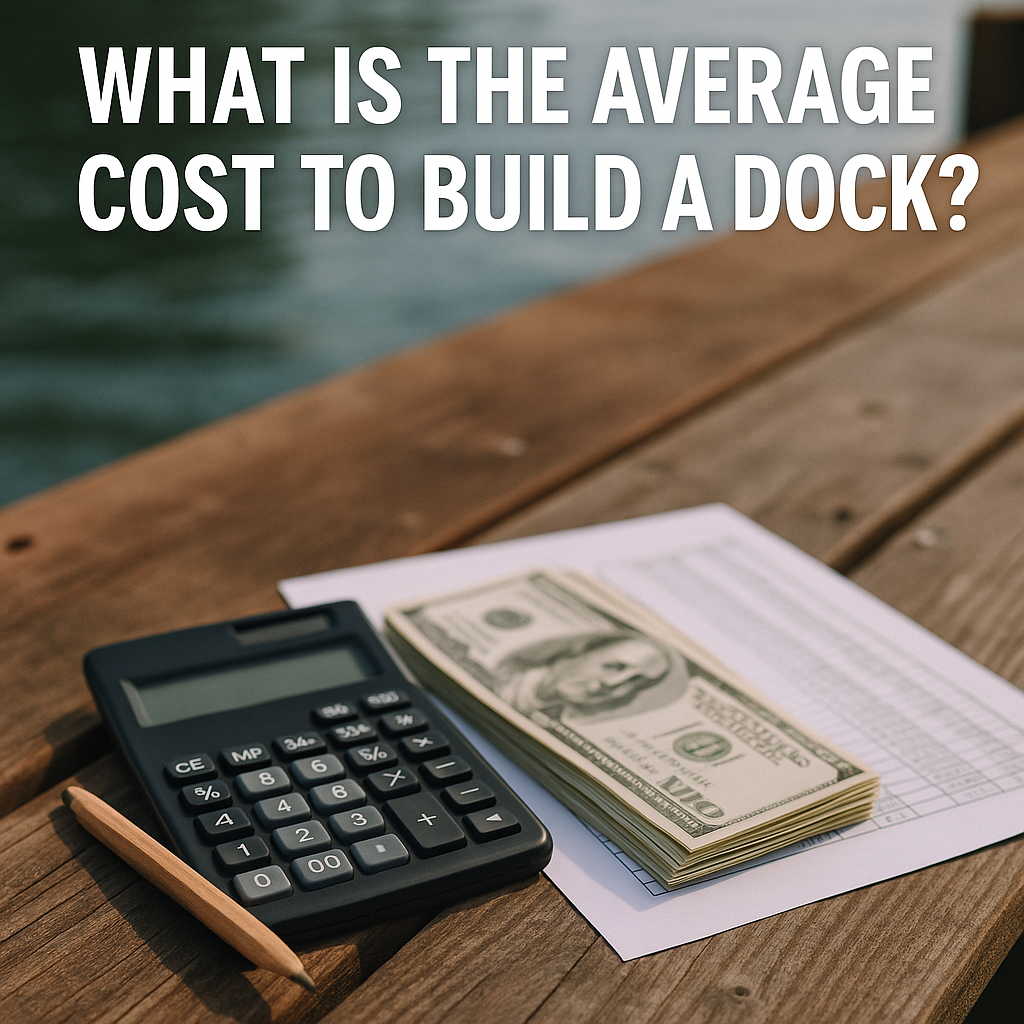What is the average cost to build a dock?

Understanding Dock Construction Costs
Building a dock can be an exciting project for homeowners, especially those living in lakeside properties like those near Lake Norman, NC. However, understanding the average cost to build a dock is crucial for planning your budget. Costs can vary widely based on various factors, including materials, design, and location. This guide will break down these costs, helping you make informed decisions.
Factors Influencing Dock Construction Costs
Several factors influence the cost of dock construction. Understanding these can help you estimate your budget more accurately.
1. Type of Dock
The type of dock you choose significantly impacts the overall cost. Common types include:
- Floating Docks: These are generally less expensive, costing between $170 to $520+ per linear foot. They are ideal for residential properties as they can adjust to changing water levels.
- Pier Docks: Typically more robust, pier docks can range from $260 to $780+ per linear foot. They are fixed structures anchored to the lakebed, providing stability and long-term durability.
- Lift Docks: Designed to accommodate personal watercraft or boats, lift docks can range from $350 to $1,030+ per linear foot. They offer the added benefit of keeping your boat out of the water when not in use, reducing wear and tear.
2. Materials Used
The materials you choose for your dock will also affect costs. Common materials include:
- Wood: A classic choice, wood decks typically cost between $170 to $520+ per linear foot, depending on the type of wood. Pressure-treated lumber is often used for its resistance against rot.
- Composite: More durable and requiring less maintenance, composite materials can range from $350 to $1,030+ per linear foot. They are made from a blend of recycled materials, offering longevity and less environmental impact.
- Aluminum: Lightweight and durable, aluminum docks can cost between $430 to $1,300+ per linear foot. They are resistant to rust and corrosion, making them an excellent choice for lakeside environments.
3. Location and Site Conditions
The geographical location and specific site conditions can also impact construction costs. Factors such as:
- Water depth
- Soil composition
- Accessibility for construction equipment
These can either add to or reduce the cost of your dock project. For instance, if your site requires specialized equipment or additional labor due to difficult access, costs may be higher. In Lake Norman, where some areas feature rocky shorelines or steep inclines, this can be particularly relevant.
Average Cost Breakdown by Dock Type
Let’s take a more detailed look at the average costs associated with each type of dock based on the aforementioned factors.
Floating Docks
Floating docks are popular for residential use due to their versatility and ease of installation. The average cost for a floating dock typically ranges from $170 to $520+ per linear foot. This price includes basic installation and materials. If you opt for additional features, such as lighting, storage, or custom finishes, expect to pay more. For example, adding solar lights along the edges can enhance safety and aesthetics at an additional cost of $430 to $1,150.
Pier Docks
Pier docks are more permanent structures that can handle heavier loads. The average cost for pier docks is generally between $260 to $780+ per linear foot. This higher cost is due to the need for additional materials and labor for installation. If your pier dock requires pilings or specialized foundations, the cost can increase significantly. In Lake Norman, where water levels can fluctuate, a deeper foundation may be necessary, adding to the total expense.
Lift Docks
Lift docks provide excellent functionality for boat owners. These docks can range from $350 to $1,030+ per linear foot. The cost variation is largely due to the type of lift system you choose, which can be manual or electric. Electric lifts tend to be more expensive but offer greater convenience, especially for larger boats. Consider that installation of an electric lift might also require electrical work, contributing an additional $720 to $2,160 to your overall budget.
Additional Costs to Consider
Aside from the basic costs of building a dock, there are several additional expenses that you should be aware of:
1. Permits and Regulations
Before starting construction, you may need to obtain permits from local authorities, especially in areas like Lake Norman where environmental regulations are strict. Permit costs can vary but typically range from $140 to $720+, depending on the complexity of the project. It’s essential to check with the North Carolina Wildlife Resources Commission and local zoning offices for any specific requirements.
2. Maintenance Costs
Maintenance is an ongoing cost that should be factored into your budget. Wooden docks require regular treatments to prevent rot and decay, while composite and aluminum docks need less maintenance. Annual maintenance can cost between $290 to $860+, depending on the materials used and the extent of upkeep required. In Lake Norman, seasonal weather changes can also impact maintenance needs, so be prepared for potential repairs after winter storms.
3. Accessories and Features
Adding features such as railings, lighting, or seating can enhance your dock’s functionality and aesthetics. These accessories can add anywhere from $720 to $7,200+ to your overall project cost, depending on the complexity and quality of the materials used. For instance, a built-in seating area or a small gazebo can significantly increase both the enjoyment and value of your dock.
Budgeting for Your Dock Project
When budgeting for your dock project, consider creating a comprehensive plan that includes all potential costs. Here are some tips to help you create a realistic budget:
- Research: Investigate local dock builders and gather estimates based on your specific needs. Look for companies that have experience in Lake Norman’s unique environment.
- Get Multiple Quotes: Contact several contractors to get detailed quotes that break down costs. Ask for references and check reviews to ensure quality workmanship.
- Plan for Contingencies: Set aside 10-20% of your budget for unexpected costs that may arise during construction. This cushion can help you manage surprises more effectively.
Conclusion
The average cost to build a dock varies significantly based on several factors including the type of dock, materials, location, and additional features. By understanding these components, you can better plan your budget and ensure a successful dock project. Whether you’re building a simple floating dock or a more complex pier dock, having a clear understanding of costs will help you make informed decisions and ultimately enjoy your lakeside experience.
Local Insights for Lake Norman, NC
Lake Norman is a popular destination for boat owners and water enthusiasts, which makes having a dock not only a convenience but also an investment in your property. The lake attracts visitors for recreational activities like fishing, swimming, and boating, making it essential to choose a dock that suits your lifestyle and property’s needs. Consider speaking with neighbors or local associations about their experiences and recommendations for dock builders in the area.
Frequently Asked Questions (FAQs)
1. Do I need a permit to build a dock in Lake Norman?
Yes, you typically need a permit to build a dock in Lake Norman. It’s crucial to check with local authorities and the North Carolina Wildlife Resources Commission for specific regulations and requirements.
2. How long does it take to build a dock?
The construction time can vary based on the type of dock and weather conditions, but on average, building a dock can take anywhere from a few days to several weeks.
3. What is the best type of dock for a residential property?
The best type of dock depends on your specific needs. Floating docks are great for versatility, while pier docks offer stability and longevity. If you own a boat, a lift dock might be the most beneficial choice.
4. How often should I maintain my dock?
Maintenance frequency depends on the materials used. Wooden docks may need annual treatment, while composite and aluminum docks generally require less frequent upkeep. Inspect your dock regularly for any damage, especially after storms.
Related Resources
- Lake Construction Services
- Choosing the Right Material for Your Dock
- Understanding Local Dock Regulations



